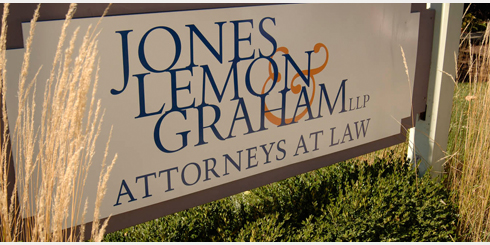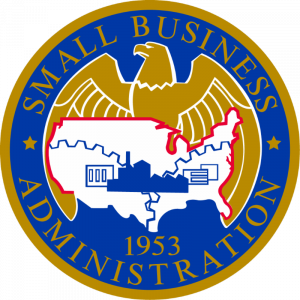Emergency loans under SBA Economic Injury Disaster Loan Program (EIDL)
By Christopher Graham and Joseph Kelly
As we’ve written about previously here, the Keeping American Workers Paid and Employed Act (“Workers Act”), amends Section 7(a) of the Small Business Act (15 USC 636(a)), by providing for the new paycheck protection (“PPP”) loans. The Workers Act, in addition, amends Section 7(b)(2) regarding economic injury disaster loans of up to $2 million, by expanding the class of eligible recipients, relaxing some requirements for approval, limiting personal guarantees, and providing a $10,000 “emergency” grant to cover certain expenses. But the circumstance in which a business or nonprofit will qualify for these loans is much more limited than for PPP loans.
Here are more details, including some comparisons to PPP loan:
- What sort of businesses and nonprofits are eligible for this loan?
“”[I]n addition to small business concerns [(as defined under the Small Business Act)], private nonprofit organizations, small agricultural cooperatives,” and any “eligible entity,” meaning “(A) a business with not more than 500 employees; (B) any individual who operates under a sole proprietorship, with or without employees, or an independent contractor; (C) a cooperative with not less than 500 employees; (D) an ESOP … with not less than 500 employees; or (E) [certain tribal businesses] …” (Workers Act, Sec. 1110).
- What is a private nonprofit organization?
“An eligible private non-profit organization is a non-governmental agency or entity that currently has: (1) An effective ruling letter from the U.S. Internal Revenue Service, granting tax exemption under sections 510(c), (d), or (e) of the Internal Revenue Code of 1954, or (2) Satisfactory evidence from the State that the non-revenue producing organization or entity is a non-profit one organized or doing business under State law.” 13 CFR 123.300(d). This includes faith-based organizations. (Non-profits eligible for PPP loans, in contrast, are limited to those described in 501(c)(3) of the Internal Revenue Code and exempt form tax under 501(a) of the Code. See Workers Act, 1102(a)(2)(A)(vii)).
- Has there been a “disaster” or “emergency” of a type necessary for a disaster loan?
Yes, wherever you are in the United States. The SBA may “make such loans … as [it] may determine to be necessary or appropriate to any small business concern, private nonprofit organization, or small agricultural cooperative located in an area affected by disaster, … if [it] determines that the concern, the organization, or the cooperative has suffered a substantial economic injury as a result of such disaster” (15 USC 636 (b)(2)). It’s enough that there was a declaration by the President that “such disaster constitutes … an emergency involving Federal primary responsibility determined to exist by the President under the section 501(b) of the [Stafford Act].” (15 USC 636 (b)(2)(D), as amended sec. 1110(f) of Workers Act). (There is no such requirement for a PPP loan).
- How do we determine if we have “suffered a substantial economic injury as a result of such disaster,” as is required for a disaster loan?
According to SBA regulations: “If your business is located in a declared disaster area and suffered substantial economic injury as a direct result of a declared disaster, you are eligible to apply for an economic injury disaster loan. (1) Substantial economic injury is such that a business concern is unable to meet its obligations as they mature or to pay its ordinary and necessary operating expenses. (2) Loss of anticipated profits or a drop in sales is not considered substantial economic injury for this purpose. “ 13 CFR 123.300(a). In addition, “[e]conomic injury disaster loans are available only if … you and your affiliates and principal owners (20% or more ownership interest) have used all reasonably available funds ….” 13 CFR 123.300(b). The circumstances under which disaster loans are available for a business, thus, are much narrower than for PPP loans. For PPP loans, the applicant must merely certify “that the uncertainty of current economic conditions makes necessary the loan request to support the ongoing operation of the eligible recipient.”).
- Are these disaster loans available to business start-ups?
Yes. SBA waives through December 31, 2020 the “requirement that an applicant needs to be in business for the 1-year period before the disaster”—provided that the business was in operation on January 31, 2020. (Sec. 1110(c)(2) of Workers Act).
- Is there a credit test for the loan?
Yes. SBA through December 31, 2020 “may—(1) approve an applicant based solely on the credit score of the applicant and shall not require … tax return or a tax return transcript … ; or (2) use alternative appropriate methods to determine applicant’s ability to repay.” (Sec. 1110(d)).
- Does it matter whether we can obtain credit elsewhere?
No. The SBA waives through December 31, 2020 usual condition that “applicant is not able to obtain credit elsewhere.” 15 USC 636 (b)(2), as amended by sec. 1110(c)(3) of Workers Act). The same waiver exists for PPP loans.
- Are there limitations on use?
Yes. Use is limited to “working capital necessary to carry your concern until resumption of normal operations and for expenditures necessary to alleviate the specific economic injury, but not to exceed that to which the business could have provided had the injury not occurred.” 13 CFR 123.303 (a). Also, proceeds can’t be used to refinance debt incurred before the disaster event, pay certain tax penalties or non-tax penalties or fines, make payments on another SBA or other Federal loan, repair physical damage, or pay dividends or disbursements to owners, except reasonable compensation of services for the business. 13 CFR 123.303 (b). Uses for a disaster loan, thus, are broader than for a PPP loan, where at least 75% of proceeds must be use for “payroll costs.”
- Are personal guarantees required?
Only if the loan exceeds $200,000. The SBA waives through December 31, 2020 “any rules related to personal guarantees on advances and loans of not more than $200,000 during the covered period [1/31/20 to 12/31/20].” (Sec. 1110(c)(1) of Workers Act). Generally, no guarantee is required for PPP loans, regardless of amount.
- Is collateral required?
Not for a loan of $25,000 or less; for larger loans, a security interest in business property is required. (13 CFR 123.11 (a) (1) and (b)). PPP loans in contrast generally require no collateral.
- What is the maximum loan amount?*
The “aggregate loan amount outstanding and committed to a borrower … may not exceed $2,000,000.” 15 USC 636 (b)(8)(A); PPP loans are limited to 2.5 times average monthly payroll costs, subject to $10 million limit
- What is the interest rate?
Reportedly 3.75% for business; 2.75% for non-profit – compared to 1% for PPP loans
- What is the maximum loan term?
30 year maximum (15 USC 636 (b)(2); PPP loans have a 2-year term
- What about the $10,000 emergency grant we heard about?
Yes, there exists such a thing, subject to self-certification under penalty of perjury of eligibility. The applicant “may request that the [SBA] provide an advance [of “not more than $10,000”] … within 3 days after receiving an application from such applicant”; so, before loan approval and regardless of whether the loan is approved. (Sec. 1110(c)(2) and (3) of Workers Act). (There is no such 3-day grant under the PPP loan program). “An advance … may be used to address any allowable purpose for a loan under section 7(b)(2) of the Small Business Act …, including—(A) providing paid sick leave to employees unable to work due to the direct effect of the COVID-19; (B) maintaining payroll to retain employees during business disruptions or substantial slowdowns; (C) meeting increased costs to obtain materials unavailable from the applicant’s original source due to interrupted supply chains; (D) making rent or mortgage payments; and (E) repaying obligations that cannot be met due to revenue losses.” (Sec. 1110(c)(4) of Workers Act). “An applicant shall not be required to repay any amounts of an advance … even if subsequently denied a loan ….” (Sec. 1110 (c)(5)).
- Is there loan forgiveness for a disaster loan?
No, except the $10,000 advance will not require repayment; forgiveness for PPP loans is limited to certain amounts paid during 8-week period immediately following loan origination, but only for payments through June 30, 2020 (so possibly less than 8 weeks if the loan closes after May 1) and will be proportionately reduced if there are layoffs or wage and salary reductions during that 8-week period.
- What if we have other loans?
You will need to consider restrictions in other loan documents that affect your ability to obtain an SBA loan and consult with your lender – and legal counsel. If you qualify for a disaster loan, you presumably will be in default under other loans; a business may obtain a disaster loan only if as a direct result of the disaster, it “is unable to meet its obligations as they mature or to pay its ordinary and necessary operating expenses.”
- What about using a disaster loan to refinance another loan?
You cannot use a disaster loan to refinance debt incurred before the disaster event. But note that the SBA is providing debt relief for certain existing SBA loans. The SBA provides more information [here.
- Where and how do we apply for a disaster loan?
Directly to the SBA here.
- How fast will they process our request?
According to reports, there is a backlog and SBA has been swamped with requests.
- Can we also apply for a PPP loan and vice versa?
Yes.
- If we apply for a PPP loan and have a disaster loan, how will things work?
You may obtain a disaster loan after January 31, 2020 and also qualify for a PPP loan, provided that the disaster loan “is for a purpose other than paying for payroll costs and other obligations described in subparagraph (F) …”—namely: “costs related to the continuation group health care benefits during periods of paid sick, medical, or family leave, and insurance premiums”; “employee salaries, commissions, or similar compensations”; “payments of interest on any mortgage obligation (which shall not include any prepayment of or payment of principal on a mortgage obligation)”; “rent (including rent under a lease agreement)”; “utilities”; and “interest on any other debt obligations that were incurred before the covered period.” (Sec.1102(a)(2)(F) (i)) and 1102(a)(2)(Q) of Workers Act). You also may also use a PPP loan to refinance a disaster loan made on or after January 31, 2020. (Sec. 1102 (F)(iv)). Any advance for a disaster loan, that wasn’t repaid, would reduce the amount of any PPP loan forgiveness.
For more information, here’s a link to the SBA EIDL program webpage.
Category: Business Law Blog Comment »

